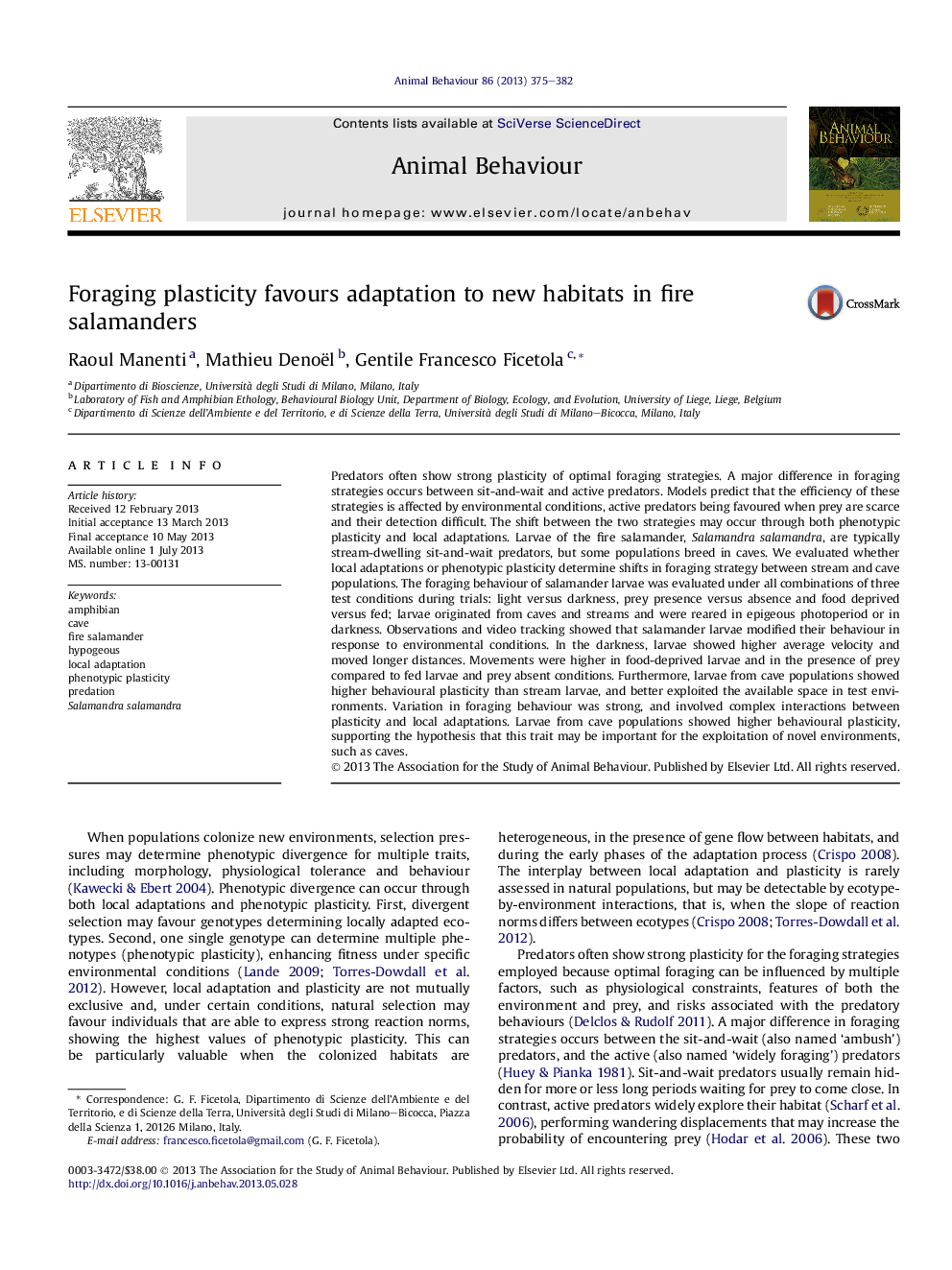| کد مقاله | کد نشریه | سال انتشار | مقاله انگلیسی | نسخه تمام متن |
|---|---|---|---|---|
| 2416603 | 1104282 | 2013 | 8 صفحه PDF | دانلود رایگان |

• Phenotypic plasticity is pivotal to exploit new environments.
• We compared foraging behaviour of salamander larvae from caves and streams.
• Plasticity allows larvae to modify their behaviour depending on light conditions.
• Foraging plasticity was particularly high in populations colonizing caves.
• Selection may promote behavioural plasticity at early stages of adaptation.
Predators often show strong plasticity of optimal foraging strategies. A major difference in foraging strategies occurs between sit-and-wait and active predators. Models predict that the efficiency of these strategies is affected by environmental conditions, active predators being favoured when prey are scarce and their detection difficult. The shift between the two strategies may occur through both phenotypic plasticity and local adaptations. Larvae of the fire salamander, Salamandra salamandra, are typically stream-dwelling sit-and-wait predators, but some populations breed in caves. We evaluated whether local adaptations or phenotypic plasticity determine shifts in foraging strategy between stream and cave populations. The foraging behaviour of salamander larvae was evaluated under all combinations of three test conditions during trials: light versus darkness, prey presence versus absence and food deprived versus fed; larvae originated from caves and streams and were reared in epigeous photoperiod or in darkness. Observations and video tracking showed that salamander larvae modified their behaviour in response to environmental conditions. In the darkness, larvae showed higher average velocity and moved longer distances. Movements were higher in food-deprived larvae and in the presence of prey compared to fed larvae and prey absent conditions. Furthermore, larvae from cave populations showed higher behavioural plasticity than stream larvae, and better exploited the available space in test environments. Variation in foraging behaviour was strong, and involved complex interactions between plasticity and local adaptations. Larvae from cave populations showed higher behavioural plasticity, supporting the hypothesis that this trait may be important for the exploitation of novel environments, such as caves.
Journal: Animal Behaviour - Volume 86, Issue 2, August 2013, Pages 375–382